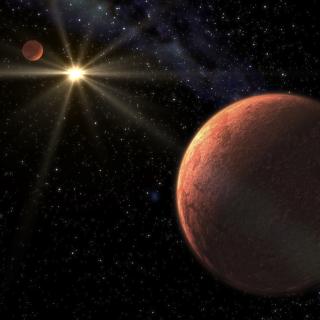Bibcode
Cortés-Contreras, M.; Caballero, J. A.; Montes, D.; Cardona-Guillén, C.; Béjar, V. J. S.; Cifuentes, C.; Tabernero, H. M.; Zapatero Osorio, M. R.; Amado, P. J.; Jeffers, S. V.; Lafarga, M.; Lodieu, N.; Quirrenbach, A.; Reiners, A.; Ribas, I.; Schöfer, P.; Schweitzer, A.; Seifert, W.
Referencia bibliográfica
Astronomy and Astrophysics
Fecha de publicación:
12
2024
Revista
Número de citas
17
Número de citas referidas
9
Descripción
Aims. Our goals are to characterise the kinematic properties and to identify young and old stars among the M dwarfs of the CARMENES input catalogue. Methods. We compiled the spectral types, proper motions, distances, and radial velocities for 2187 M dwarfs. We used the public code SteParKin to derive their galactic space velocities and identify members in the different galactic populations. We also identified candidate members in young stellar kinematic groups, with ages ranging from 1 Ma to 800 Ma with SteParKin, LACEwING, and BANYAN Σ. We removed known close binaries and performed an analysis of kinematic, rotation, and activity indicators (rotational periods and projected velocities, Hα, X-rays, and UV emission) for 1546 M dwarfs. We defined five rotation-activity-colour relations satisfied by young (τ ≲ 800 Ma) stars. Results. We identified 191 young M dwarf candidates (∼12%), 113 of which are newly recognised in this work. In this young sample, there are 118 very active stars based on Hα emission, fast rotation, and X-ray and UV emission excess. Of them, 27 have also strong magnetic fields, 9 of which are likely younger than 50 Ma. Additionally, there are 87 potentially young stars and 99 stars with a dubious youth classification, which may increase the fraction of young stars to an astounding 24%. Only one star out of the 2187 exhibits kinematics typical of the old Galactic halo. Conclusions. A combined analysis of kinematic and rotation-activity properties provides a robust method for identifying young M dwarfs from archival data. However, more observational efforts are needed to ascertain the true nature of numerous young star candidates in the field and, perhaps more importantly, to precisely quantify their age.
Proyectos relacionados

Estrellas de Baja Masa, Enanas Marrones y Planetas
Se investigan los procesos que conducen a la formación de estrellas de baja masa, enanas marrones y exoplanetas y caracterizar las propiedades físicas de estos astros en varias etapas evolutivas. Las estrellas de muy baja masa y las enanas marrones son probablemente los objetos más numerosos de nuestra Galaxia, pero no por ello están
Rafael
Rebolo López

Exoplanetas y Astrobiología
La búsqueda de vida en el Universo se ha visto impulsada por los recientes descubrimientos de planetas alrededor de otras estrellas (los llamados exoplanetas), convirtiéndose en uno de los campos más activos dentro de la Astrofísica moderna. En los últimos años los descubrimientos cada vez más numerosos de nuevos exoplanetas y los últimos avances
Enric
Pallé Bago